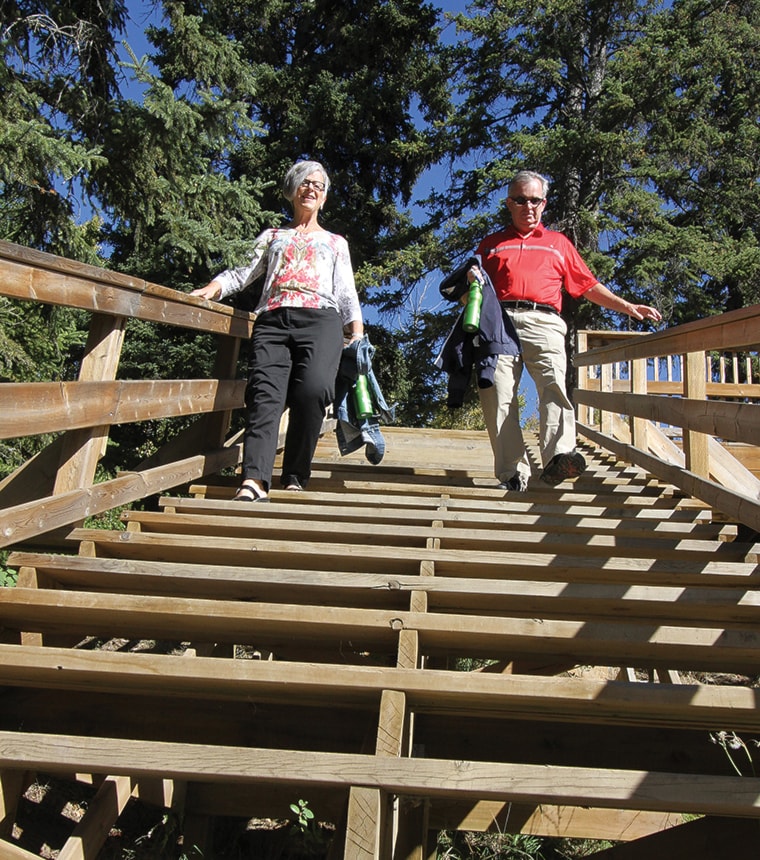The final section of Red Deer’s Waskasoo Park system — Maskepetoon Park — is officially open just in time to show off its fall colours.
About 350 people came out to the official opening of the park, located on the southwest side of Oriole Park, to tour the park and enjoy a free barbecue.
“There is no time when this node of the park is more beautiful than in the fall. It’s here we see the tamarack trees turn their beautiful golden yellow,” said Mayor Morris Flewwelling about the coniferous deciduous trees.
Unlike most conifer trees, tamaracks lose their needles in the winter and grow new ones in the spring. The collection of tamarack trees in Maskepetoon Park grow in a fen – a wetland area similar to a bog, with a high water table and a thick layer of peat.
Such an ecosystem is rarely found this far east in Alberta and is the most ecologically sensitive area within Red Deer’s park system.
Flewwelling said Red Deer’s parks and trails contribute to the quality of life in the city by connecting people to nature.
The parks have attracted many admirers, both inside and outside the city, he said.
“I don’t think there’s anybody in Red Deer or Central Alberta, or anyone who has ever visited Red Deer, that doesn’t think of our park system as absolutely the heart beat and heart of our community.”
He said Waskasoo Park system was developed as a result of the Loughheed government’s policy to create urban parks in Alberta’s cities.
“Clearly the park that Red Deer built, the Waskasoo Park, is the gem of all of those parks in Alberta.”
Maskepetoon Park is dedicated to Chief Maskepetoon, a Cree chieftain from the 1800s. A renowned warrior in his youth, Maskepetoon later became a strong promoter of peace among the tribes of Central Alberta.
Flewwelling said it’s fitting to be honouring the park named after a great peacemaker the day after International Day of Peace.
Development of the 30-hectare park of forest and marshland began in 2009.
Work in the park was done in four phases. The total cost was about $1.15 million and included helicoptering bridges in place to preserve the ecology, trail and boardwalk construction, vegetation reclamation, and finally signage.
Some of the signage is still temporary but work will be complete by the end of the year.
The park has been open to the public since the trails and boardwalks were in place.
The site was originally an undisturbed river valley. It was bisected by the Highway 2 bypass in 1959. Increasing human activity from highway traffic, developing neighbourhoods, and off-road vehicles threatened the plants and wildlife in the area.
On Sunday, Junior Forest Wardens planted over 1,000 tamarack seedlings in the area to celebrate the park’s opening.
szielinski@www.reddeeradvocate.com
